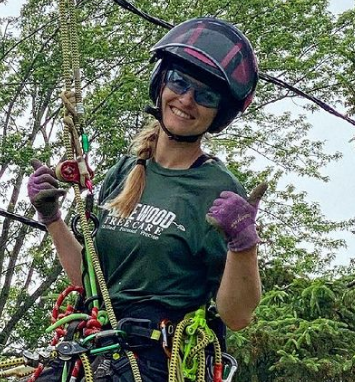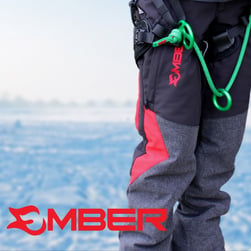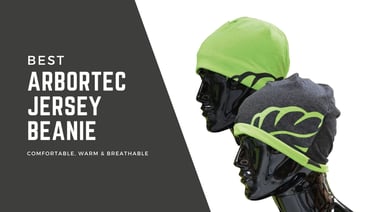Most Recent
Featured Stories

Subscribe To Receive Our Blogs
Popular Stories
Popular Tags
Arborist General Interest Business Arborist Gear Skills Training Events Tree CareIt’s that time of the year again. Your saws are set to their winter setting, you started running winter bar oil a month ago, and your diesel equipment is starting to complain in the morning.
It’s Winter, and dressing for Winter is WAY different than dressing for any other season. Here is a quick guide to help keep you comfortable and productive in the cold.
Step 1- Your base layer
The base layer is the layer you wear under all your other clothes- the first layer you put on. It is the closest to your actual skin. This layer is crucial and will make all the difference between a soggy butt and nice comfortable dry skin. Even when you are moving and sweating.
Always choose a breathable moisture-wicking base layer. It is best to avoid cotton because it holds onto moisture and will make you cold and uncomfortable in the long run. Wool is a fabric with excellent moisture wicking properties (it's been keeping animals alive in the cold forever), but it can run on the pricey side. Alternatively, synthetic base layers that wick moisture are available. They perform nearly as well as wool, but some do tend to become a bit smelly!
A moisture-wicking layer cannot wick moisture if it isn’t touching your skin. For that reason, this layer must fit comfortably snug (but never restrictive!).
A special note on socks: Your feet are the farthest from your heart a body part can get. It gets the warm blood your heart pumps through your body the absolute last. It makes sense to treat your feet extra special when it comes to dressing for the cold.
If you don’t mind having extra layers around your feet, it may make sense to look for wool or synthetic sock liners. These go under your super thick warm wool socks! Otherwise, if you are like me and DESPISE anything restrictive around your feet, it may make more sense to go straight into a thick, cold weather rated merino wool super sock. Make sure it guarantees moisture-wicking, of course.
Step 2- Your 2nd (insulating layer)
This layer should fit comfortable over your base layer (not too tight!). Since you are going to work and will likely be spending all day outside doing physical labor (and activities that are tough on your clothes) you’ll want to choose fabrics that are somewhat more durable. Think heavy weight fleece here. Puffy jackets are good choice if you don’t care about ripping it up. If you opt for a puffy jacket, do look for synthetic fill, as it fairs better once you get sweaty or wet from the rain.
This layer can be doubled-up, if need be, depending on how long you plan on spending outside and how cold the weather is. Make sure your layers fit together nicely and don’t cause any restrictiveness to happen!
Your saw pants will likely act as this layer for your legs in this setup. Alternatively, it may be a good idea to size up on saw pants and wear a layer between your base layer and your saw pants as your insulating layer. Loose fitting fleece long johns are great for this purpose. Just don’t over-do it or you’ll sweat!
Step 3- Your outer (shell) Layer
This is the layer that will help protect you against wind and rain. Think raincoats and pants. If your outer layer is waterproof, it will also be wind proof, so if there is rain in the forecast go find your most comfortable raincoat and the job is done. Look for raingear that is tagged “waterproof and breathable” since it will do the best job at keeping the water out from the outside, and it will prevent water from pooling on the inside (you sweaty work machine you!).
Head, Neck, Hands…
To stay nice and cozy, you’ll have to make sure that your hands and neck and head are protected as well.
Hat- Obviously, you’ll need something that fits under your hardhat. Nice thin hardhat liners are available. Alternatively, you can find lovely thin beanies or balaclavas that are made of merino wool or synthetic fibers. Since this layer is worn against the skin, prioritize moisture-wicking properties.
Neck- You’ll likely need a little something extra for your neck. It is always a good rule to avoid cotton and your breath is likely to collect inside of a neck gaiter (or balaclava) that isn’t breathable (queue the “wool and synthetic fibers” song again! No one wants to eat frozen spit). Look for a neck gaiter that isn’t too bulky and won’t restrict your movement. Ensure it covers as much skin as possible.
Hands- Hands are tricky! They move so much, and experience has taught me that insulating gloves are usually also restrictive! A good idea is to work with a pair of glove liners (moisture wicking, of course!) that you would wear underneath your work gloves. Otherwise, you can alternate with a pair of big jumbo winter gloves (while cutting and doing groundwork) and switch to a lighter pair of gloves when you need to use the dexterity of your hand (climbing and tying / untying knots).
Bonus!
Hand warmers! Still can’t seem to stay warm? Hand warmers are for you. They tend to last approximately 10 hrs. and can easily be stashed inside your boots, gloves, pockets… wherever!
Tea! Staying hydrated is key to aiding your body to perform its necessary functions (staying warm included!) Since it’s difficult to coax yourself to drink ice cold water when you are already freezing, consider keeping a nice thermos loaded with a warm beverage nearby. Ginger tea is a good choice since ginger is said to aid in circulation, and good circulation helps keep you warm!
Ok, now hopefully you are all set… Stay Warm and Cozy out there, lovely arborists!
References
The Ontario Hunter Education Manual https://www.ohep.net/wp-content/uploads/2020/05/HunterEducationManual_2020.pdf
Ken Knapp, “How to Dress in Cold Weather” REI Blog, February 14, accessed January 20th 2022, https://www.rei.com/blog/snowsports/how-to-dress-in-cold-weather
Mayo Clinic Staff “Winter fitness: Safety tips for exercising outdoors” Mayo Clinic, June 29 2019, accessed January 20th 2022 https://www.mayoclinic.org/healthy-lifestyle/fitness/in-depth/fitness/art-20045626
“Winter is coming: What to wear for outdoor work” Work Place Safety North, November 05 2021, accessed January 20th 2022 https://www.workplacesafetynorth.ca/news/news-post/winter-coming-what-wear-outdoor-work





